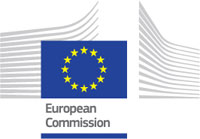Menu
GLIMFLO - Global to Local IMpacts of FLow over Orography
 PCIG13-GA-2013-618016
PCIG13-GA-2013-618016
Project Summary
Developing accurate forecasts for weather, climate and meteorological natural hazards has become a priority due to the ensuing savings in human lives and property damage. Mountain waves affect the atmosphere over a wide range of scales, causing severe local weather phenomena such as downslope windstorms, lee-wave rotors and clear-air turbulence, which are also important aviation hazards. However, the triggering mechanisms controlling these phenomena are still largely unknown, and methods used to model them operationally have a weak physical basis. This project will bridge the conceptual gap currently existing between our understanding of such phenomena at low and high amplitude, via a combination of theory and numerical simulations. It will assess the triggering mechanisms and controlling parameters of downslope windstorms, lee-wave rotors and clear-air turbulence.
At larger scales, the drag force associated with mountain waves decelerates the atmospheric circulation, and must be parametrized in global weather and climate models, leading to temperature biases in excess of 10K in the polar stratosphere if omitted. Substantial imbalances in the modelled angular momentum budget of the Earth suggest that the impact of vertical wind shear on mountain wave drag, currently neglected in drag parametrizations in all global forecast models, should be included. The theory necessary to do this has been developed previously. Through partnerships with the UK Met Office and ECMWF, high-resolution verification of drag parametrizations that take wind shear into account will be performed, these parametrizations will be implemented, and their impact on forecast skill tested.
The Department of Meteorology of the University of Reading (one of the top Meteorology departments in Europe) provides optimal conditions to increase the impact of this research, foster interactions with highly skilled colleagues and maintain, as well as enhance, collaborations abroad, allowing the creation and development of a new research group on Mountain Meteorology.